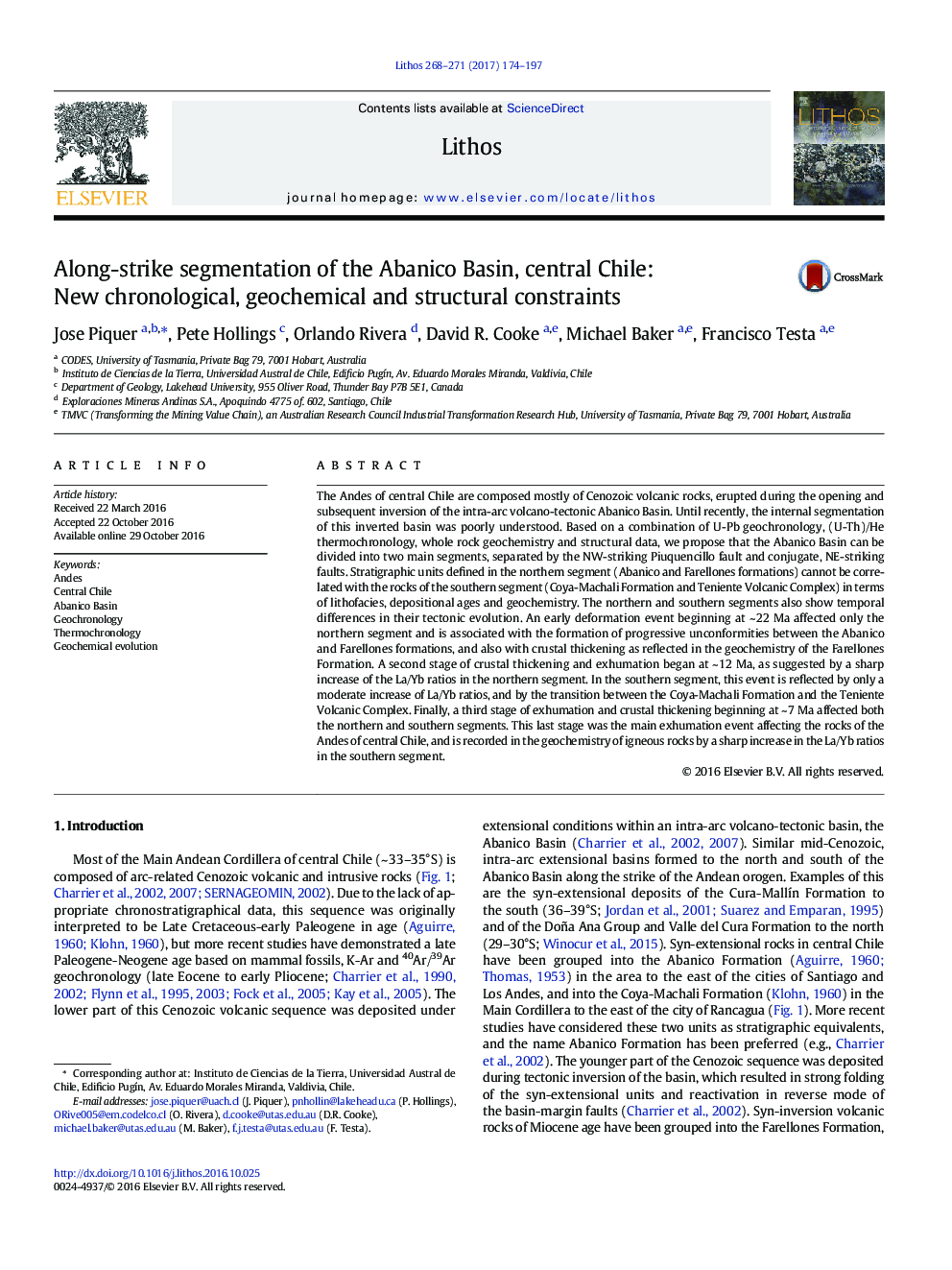| Article ID | Journal | Published Year | Pages | File Type |
|---|---|---|---|---|
| 5784345 | Lithos | 2017 | 24 Pages |
â¢The Abanico Basin in central Chile can be divided into two main segments.â¢The two segments are separated by a major orogen-oblique fault system.â¢The two segments have different stratigraphic and intrusive histories.â¢Igneous rocks of each of the two segments have different geochemical evolutions.â¢Both segments were affected by a major exhumation event at 7-2 Ma.
The Andes of central Chile are composed mostly of Cenozoic volcanic rocks, erupted during the opening and subsequent inversion of the intra-arc volcano-tectonic Abanico Basin. Until recently, the internal segmentation of this inverted basin was poorly understood. Based on a combination of U-Pb geochronology, (U-Th)/He thermochronology, whole rock geochemistry and structural data, we propose that the Abanico Basin can be divided into two main segments, separated by the NW-striking Piuquencillo fault and conjugate, NE-striking faults. Stratigraphic units defined in the northern segment (Abanico and Farellones formations) cannot be correlated with the rocks of the southern segment (Coya-Machali Formation and Teniente Volcanic Complex) in terms of lithofacies, depositional ages and geochemistry. The northern and southern segments also show temporal differences in their tectonic evolution. An early deformation event beginning at ~Â 22Â Ma affected only the northern segment and is associated with the formation of progressive unconformities between the Abanico and Farellones formations, and also with crustal thickening as reflected in the geochemistry of the Farellones Formation. A second stage of crustal thickening and exhumation began at ~Â 12Â Ma, as suggested by a sharp increase of the La/Yb ratios in the northern segment. In the southern segment, this event is reflected by only a moderate increase of La/Yb ratios, and by the transition between the Coya-Machali Formation and the Teniente Volcanic Complex. Finally, a third stage of exhumation and crustal thickening beginning at ~Â 7Â Ma affected both the northern and southern segments. This last stage was the main exhumation event affecting the rocks of the Andes of central Chile, and is recorded in the geochemistry of igneous rocks by a sharp increase in the La/Yb ratios in the southern segment.
